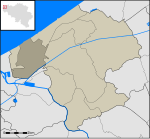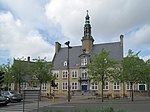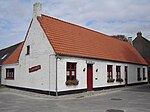Battle of the Yser

The Battle of the Yser (French: Bataille de l'Yser, Dutch: Slag om de IJzer) was a battle of the First World War that took place in October 1914 between the towns of Nieuwpoort and Diksmuide, along a 35 km (22 mi) stretch of the Yser River and the Yperlee Canal, in Belgium. The front line was held by a large Belgian force, which halted the German advance in a costly defensive battle. The victory at the Yser allowed Belgium to retain a small strip of territory, with Germany in control of 95 per cent of Belgian territory, which made King Albert a Belgian national hero, sustained national pride and provided a venue for commemorations of heroic sacrifice for the next hundred years.
Excerpt from the Wikipedia article Battle of the Yser (License: CC BY-SA 3.0, Authors, Images).Battle of the Yser
Loodswezenplein,
Geographical coordinates (GPS) Address Nearby Places Show on map
Geographical coordinates (GPS)
| Latitude | Longitude |
|---|---|
| N 51.152777777778 ° | E 2.7230555555556 ° |
Address
Blauwvoet
Loodswezenplein
8620 (Nieuwpoort)
West Flanders, Belgium
Open on Google Maps










